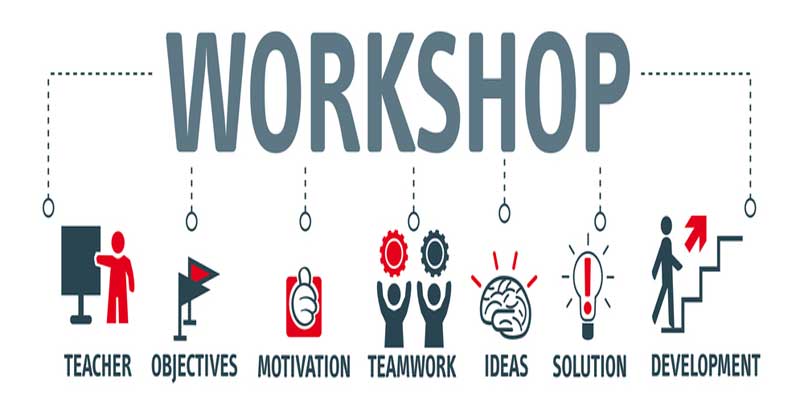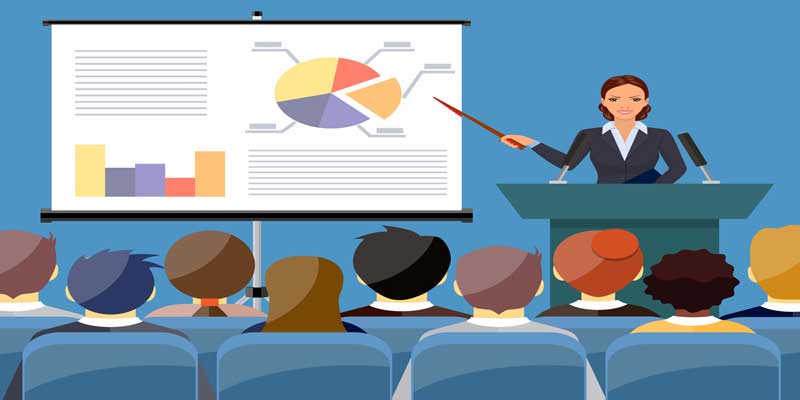Leadership plays a crucial role within the work yet as different community organizations. Leadership activities square measure related to advantages to business, together with augmented performance and productivity.
However, maybe the sign of a very undefeated leader could be a happy, healthy work. Inquisitive about what leadership activities will do for your work or school? Scan on.
There could also be some overlap with leadership activities found below bound headings, for instance, leadership activities appropriate for adults may additionally be helpful for teams, or with workers.
What are Leadership Activities?
Increasingly, individuals are assumptive positions of leadership within the work. However, the journey to turning into a frontrunner is extended. Leadership activities square measure valuable on the journey to turning into an efficient leader, and additionally develop confidence in leadership groups.
Leadership activities could also be conducted on or off the website, and be physical or inactive. Leadership activities will either be performed by a frontrunner in their own team, or with an Associate in Nursing external assistant. They will take the shape of specially organized themed events, like scavenger hunts. Or, they will be smaller, office-based tasks designed into a normal workday. For instance, leadership activities might encompass meeting openers or conference break activities.
Leadership activities are an efficient method for people to follow and strengthen their leadership and team-building skills. They’ll even be fun!
The structure of leadership activities is crucial. It’s necessary that the participants will relate the activity to the work setting.
What are They Used For?
Leadership activities are sure accustomed to facilitate people learn necessary skills to be effective leaders and to push the expansion and development of a leadership team. Leadership activities are accustomed to improve cooperation, foster higher communication within the work, and develop team cohesion.
The operating vogue, principles, and values of a frontrunner could be a crucial facet in determining the behavior at intervals of a corporation. Leadership coaching will facilitate leaders to become role-models. The behavior of leaders and what they think about the “norm” determines that behaviors square measure enforced and people that square measure rebuked.
Given the importance of a leader’s behavior, it’s additionally essential that they learn skills, such as:
Communication
Leaders ought to develop the flexibility to obviously, compactly notify workers of everything from the goals of an organization to the main points of specific work-tasks.

Many parts square measure necessary for effective communication, together with active listening, reading visual communication, and communication like emails.
Motivation
Leaders ought to inspire workers. They will do that by increasing worker’s vanity, by recognizing effort and action, or by giving an employee new responsibilities to additional their investment within the business.
Delegating
Leaders can do this by distinguishing the abilities that staff have, and per se assign tasks to every employee supporting the abilities they need.
Positivist
Being positive helps develop a cheerful, healthy work setting, even once the work is busy or disagreeable.
Trustworthiness
By demonstrating integrity, staff can feel comfortable approaching their leader with queries or considerations. Building trust is one of every of the foremost essential leadership skills.
Creativity

Good leaders square measure willing to undertake novel solutions or to approach issues in a very non-traditional method.
Feedback
Leaders are perpetually on the lookout for opportunities to produce team members with data regarding their performance, while not ‘micromanaging’ their work.
Responsibility
A good leader accepts mistakes or failures and instead seeks solutions for improvement of a scenario. This ability additionally includes being reflective and being hospitable feedback.
Commitment
A leader ought to try to follow through with everything that they conform to. It additionally involves applying acceptable feedback and keeping guarantees.
Flexibility
Leaders ought to be able to settle for changes and creatively problem-solve, yet as being hospitable suggestions and feedback. While these skills square measure explained in a very work context, they’ll simply be applied to different leadership things like sports or community teams.
Now that you just have a lot of clarity on what leadership activities square measure, and what they’re used for, allow us to look into a large choice of activities. whereas a number of the activities and games might not now seem to be ‘leadership activities,’ the chosen activities would possibly develop and promote the leadership skills printed higher than.
8 Samples of Leadership Activities
Formal leadership activities actually form up what’s typically thought of as ‘training’ or ‘development.’ However, several activities provide leadership development, while not the person realizing they’re engaged in learning the way to be a frontrunner.
Here are eight such activities:
1. Sports
Sports offer the expertise of being a team member and developing leadership skills.
2. Cross-Cultural Expertise
Experiences with a special culture offer new, probably uncomfortable things and facilitate developing communication skills that will not be learned elsewhere. Overseas travel, or operating with a special cultural cluster at intervals your community will offer a chance to be told new skills or could involve barriers that have got to be overcome all teaching.
3. Leadership Social Teams

Involvement in social activities helps potential leaders develop a comprehensive, assured temperament which boosts their capability to steer a team.
4. Internships
Taking an Associate in Nursing situation position demonstrates initiative to search out opportunities to be told and seek sensible work and valuable skills in leadership.
5. Volunteering
As well as showing ambition, volunteering shows that you are just a unit willing to commit yourself to 1 thing that you are just a unit of measurement obsessive about.
6. Student Government and Organizations
Specifically considering students, caring in co-curricular organizations facilitates people to develop leadership. Caring in student government or organizations will offer opportunities to demonstrate leadership and have sway on those around you.
7. Passion Projects
Showing commitment to a passion for higher communities, as an example, mentoring shows that you just are a unit seemingly to concentrate on the larger smart for a team.
8. Teamwork
This can be something the smallest amount, from serving out with designing a family event or collaborating during a very volunteer day, can demonstrate and develop leadership skills.
4 Leadership Workshop Concepts

Effective leader’s units of measurement aware that continued skilled and personal development is the key to ongoing success. As such, they acknowledge that leadership workshops are necessary.
What Leadership Activities are Utilized in Such a Workshop?
Here unit four suggestions:
Idea 1: ‘Tallest Tower’
Participants unit gave everyday things like toothpicks, woodblocks, raw food than on. The task is to form the tallest attainable free-standing structure from the materials provided. This activity is meant to encourage artistic problem solving and developing collaboration skills.
Idea 2: ‘Center Stage’
Leaders should be humble by seeking out feedback which concentrates on the requirements of others.
You need to be receptive to people’s feedback and criticisms and knowledge to admit that you’re not good and once you’ve created a slip-up.
Select four team members as volunteers. One team member plays the role of Associate in Nursing worker UN agency has lost conferences or been late to work in recent times. Every of the alternative 3 participants demonstrates a special kind of leader (to save time, nominate the particular temperament trait). All participants to form a circle, and place 2 chairs within the center of the circle.
After every demonstration of the thanks to subsuming the worker, raise the entire cluster to mirror the assorted leadership approaches. As an example, the cluster might consider what worked and what didn’t. Finally, to conclude this activity, raise the cluster to contemplate what the ‘ideal’ leader would neutralize things.
Idea 3: ‘Minefield’
It involves participants operating in pairs, with one team member being blindfold. Then, exploiting solely nominative communication techniques, they try to talk about their method around or over a ‘minefield’ of obstacles.
So, as an example, the participants could even be told they’re solely ready to use commands just like the words ‘left’ or ‘right,’ ‘forwards’ or ‘backward.’ The aim is to help the blindfold team member to navigate the ‘minefield.
Idea 4: ‘Magic Carpet‘
Provide a little canvas or floor cover, that has enough space for all workshop participants to face at intervals its boundaries. Then, inform the cluster that their task is to work along to flip the ground covering or canvas over with the non-participant stepping off. If (or when) a participant steps off the groups have mentioned all of the paragraphs or canvas, the team should recommence.
2 Leadership Activities that Help You Differentiate Types of Leadership
There are three different ‘leadership styles’. These are: autocratic (also referred to as authoritarian), delegation (also called ‘free reign)’ and democratic (which is additionally called participative).

An autocratic leader makes decisions without first consulting others, while a delegation leader allows the staff to form the choices. Here is a superb resource for exploring different leadership styles.
The workbook also provides some helpful worksheets.
Leadership
The group should be divided into small groups of three – 4 participants. The participants add groups for the primary leadership activity, and so they work individually on the second leadership activity.
Activity One
Provide an inventory of roughly 10 – 12 scenarios displaying the three different leadership styles. He immediately starts by telling the crew what change must be made. When some suggestions are made, he tells them he doesn’t have time to think about them.
The group then works together to work out which leadership style is employed in each scenario and to speak about whether it’s effective, or if a unique style could work better.
Encourage participants to consider themselves in a very similar situation and their reaction to the actual leadership style.
Activity Two
Provide participants with the statement ‘consider a time after you, or another leader, used the authoritarian (autocratic), participative (democratic) or delegation (free reign) sort of leadership’.
Would a distinct leadership style have worked better? What were the employees’ experiences? Did they learn from the leadership style? What was it they learned? Which style is easiest to use (and why)? Alternatively, nominate the fashion which the participant prefers (and why).
To conclude these two leadership activities, move as a full group and discuss what was learned about the three varieties of leadership.
3 Situational Leadership Activities and Scenarios

Situational leadership is when a frontrunner is flexible in their approach and uses different leadership strategies counting on matters the subsequent three games, from Johnson-Gerard (2017) provide a chance to explore situational leadership activities and scenarios. That is discussed in the following:
1. ‘Jumping Ship’
The aim of this game is for participants to reflect upon different leadership styles and are available up with an inventory of actual workplace scenarios that might need a frontrunner to abandon a natural leadership style for one that’s simpler (i.e., to ‘jump ship’).
Three large pieces of paper are given to all the participants in each group. Ask the teams to jot down one variety of leadership on each (i.e., autocratic, delegation, democratic). Then, allow the groups 45 minutes to return up with real work situations that employing the actual leadership style would be disastrous.
Ask the groups to put the sheets of paper au courant on the wall, and to debate the sheets as a team. As an entire group, review the posters.
2. ‘Who Ya Gonna Call’
Each participant begins by writing a one-paragraph description of a piece situation that’s not going well. Collect these, and at the highest of every page, number them in consecutive order. Then, divide the participants into two teams.
Give each team 1/2 of the paragraphs. Have the teams note their answers on a bit of paper, being absolute to identify the paragraph number on the highest of every page, and their choices.
When the teams have discussed all the paragraphs, discuss the scenarios and review the alternatives as a gaggle. Where the team’s choices are different, discuss as a gaggle.
3. ‘Ducks During a Row’
This particular activity enables participants to plot a 3-to-5 step decision-making process they will use when challenging leadership situations occur.
Ask participants to make pairs. Then, ask them to come back up with the steps that an efficient leader goes through so as to figure out the way to manage a difficult situation. Half an hour later, each pair reviewed all the things they have done and put them on an oversized piece of paper.
Ask every pair to review their process, and in any case, the pairs have done so, have a bunch discussion that permits a consensus to be reached about the three to 5 only steps to require in a very difficult leadership situation.
8 Games and Leadership Activities for Youths

Leadership Activities Help the Youth Generation to Build up their Skills.
What’s important is to find the leadership activities that youth will find enjoyable and take pleasure in.
Edsel (2016) provides eight suggested leadership activities for youths to find out leadership skills:
1. ‘Create a replacement You’
Provide children with materials like textbooks, crayons, poster/construction paper, magazines, and scissors. Then, ask them to draw themselves, using things that clearly show that the image is theirs like using cut-outs of their most favorite things to try to do. Once the kids have finished their posters, they will show their completed work to the opposite children helping kids to boost their confidence to steer.
2. ‘Same or Different’
The children sit in an exceedingly large circle. Ask the primary child to point to a different child within the circle who is comparable to them, either in appearance, hair-style, or clothing color. Then, when the kid has chosen someone, ask them to notice other differences and similarities they need with the kid they need to be chosen.
3. ‘Move the Egg’
Ask children to create groups of 4 or five. Then, have the youngsters select a frontrunner for his or her team. The leader has the task of finding an efficient thanks to moving the eggs from one point to another. As an example, one option is also for kids to create a line to pass each egg along. The winner of the sport is the group that will get their egg safely across the finish within the most creative way.
4. ‘Lead the Blindfolded’
This game requires an outsized indoor or outdoor area. The group should be divided into two categories and every member in the group will be blindfolded except one member. The child who isn’t blindfolded is required to steer their team to the other side of the designated space, using clear commands. Ensure that each member of the team contains a chance to steer their team. The winner is that the team that sees its members successfully cross the goal.
5. ‘Charity Support’
Each child can have a singular task. as an example, one child may select the charity, another may find an appropriate space to hold the fundraising activity, and another child can collect donations.
6. ‘Planning Strategies’
Teach children to divide an outsized task into smaller steps. Set the children an oversized task, like holding a category function. Show the youngsters a thought that enables them to realize the task step by step. This activity can involve types of kids sharing tasks. Suggest to the youngsters how they’ll be able to improve.
7. ‘Volunteer Roles’
Volunteering plays a task in leadership. seek advice from children on how they’d wish to assist someone in need. Older children are additionally interested in taking a task in a very corporation in their community. The children should be helped to choose a volunteer opportunity that has them a chance to practice leadership and work with other children.
8. ‘A Quick Quiz’
In this task, ask students to be prepared to evaluate an experience when it’s over. Then, after the experience, ask the child questions. For example “Did you touch the dog?”. “What is that owner’s name?” then on. This is an excellent introduction to leadership for teenagers in grades 4 – 6 (children aged approximately 9 – 12 years).
3 School Room Leadership Activities for College Kids in Elementary

Introducing leadership activities into the schoolroom provides a wonderful method for all kids to develop their leadership skills. samples of such activities are:
1. ‘Just Listen’
Make an associate agreement that you just and also the student(s) can refrain from talking concerning yourselves for an entire day. Ask them, rather, to pay attention to others, and if they are doing see another person, it ought to be concerning the person whom they’re rebuking. This game helps kids to find out however vital it’s to specialize in people instead of themselves, which forms the premise of ‘relational leadership’.
2. Silence Schoolroom Leadership Game
To begin the activity, the teacher divides students into 2 groups, and also the groups move to either aspect of the schoolroom. The desks could also be brushed aside to make extra space. The teacher instructs the scholars to, for instance, ‘line up consistent with the primary letter of your surname’ or ‘arrange yourselves into age order by the month your birthday is in’. the scholars then follow the directions while not speaking a word to at least one another.
Students are allowed to use hand signals, or perhaps write directions down on paper. The teacher’s instruction to the scholars is that they’re not allowed to speak. The winning team is the one that completes the task with success.
3. ‘The Cup Game’
Divide students into pairs and choose one student to be the leader. Every team ought to face one another standing up, with a plastic cup within the middle. The leader calls out easy directions, like ‘touch your knee’, ‘close one eye’ so on.
When the leader calls out “cup” the scholars ought to attempt to be the primary to grab the cup. The player United Nations agency with success grabs the cup ought to combine up with another player United Nations agency conjointly got the cup. Those while not a cup sit down and watch.
Once the new groups of 2 have shaped, the cup is placed in between the players, and also the game begins once more. This method continues till just one person is left standing and also the ensuing winner becomes the new leader and play will begin everywhere once more.
6 Leadership Activities and Games for top Faculty Students
By high school, students are additionally refined. Here are some fascinating leadership activities for top faculty students to develop leadership.

1. Group Action for Modification
The teacher puts students into teams of four or five. The goal is for college kids to return up with doable solutions to social, political, or economic issues. operating along, students brainstorm each small and large scale solutions to a given downside topic.
Once the teams have finalized their list of elaborated solutions, the teacher facilitates a discussion with the total category, and along they examine that of the known solutions may well be a viable possibility and why.
2. Leadership Characteristics
The teacher puts students into pairs or teams of 3. Then, every cluster member shares a story concerning somebody whom they fancy to be an associate important leader. Once every story has been shared, students discuss the characteristics that they suppose created the person within the story an efficient leader.
Once every student has shared a story, students compile an inventory of all the characteristics of the associate important leader they know. Post these characteristics on the walls around the schoolroom.
3. Blindfold Leader Game
The teacher arranges the scholars into one line and comes up with a purpose start line|place to begin and finish. Then, the teacher places a blindfold on each student apart from the coed United Nations agency that is at the front of the road.
The teacher tells every student to place their mitt on the left shoulder of the person ahead of them. Next, the teacher says “go”. The aim is for the leader (who isn’t blindfolded) to run towards the finishing purpose, providing directions to students behind, and the United Nations agency is blindfolded.
An extra difficult game sees the teacher golf stroke obstacles within the path. The leader should direct followers on the way to avoid the obstacles and with success reach the destination. Once this goal is achieved, a distinct student takes a flip of being the leader.
4. Buckets and Balls
This game aims to maneuver all the balls from one box to a different one. In equal-sized groups, players opt for one ‘handler’ per team. {this is|this is often|this will be} the only one that can bite the balls with their hands.
The handler should stay behind the beginning line throughout the sport. Team members plan to get balls from their bucket at the destination and acquire them to the team’s handler while not the ball touching their hands or arms.
The handler places the balls into the empty bucket at the beginning line. If a team member touches the ball, they’re disqualified and might now not participate.
Give groups a 5-minute limit. All groups play at constant time, and also the team that has the foremost balls within the handler’s bucket at the tip of the sport wins.
5. Team Jigsaw
Two groups got to complete a puzzle at intervals of twenty – 30-minute limits. Provide every team a box containing a puzzle. At first, A body can assume that its task is to finish the puzzle. As they work thereon, however, groups can notice that the puzzle is missing a number of its items and has some further items that don’t work their puzzle.
Teams then have the task to speak with each other, and that they can eventually notice that they have to figure it out to finish the puzzle. groups are solely allowed to exchange items of the puzzle one at a time.
6. ‘Sneak-a-Peek’
Divide participants into 2 groups. Build a structure out of toys. Create it sophisticated, however able to be replicated. make sure that there are spare toys left to make 2 similar copies of the structure.
Conclusion
The leadership activities are the capability to lead the act or associate degree instance of leading. That’s nice as way as a definition goes, however, skilled managers apprehend that there’s far more concern than merely possessing the qualities and capacities necessary to guide. A productive leader can exercise those leadership activities and apply them to enhance. Leadership activities offer that chance to apply.




